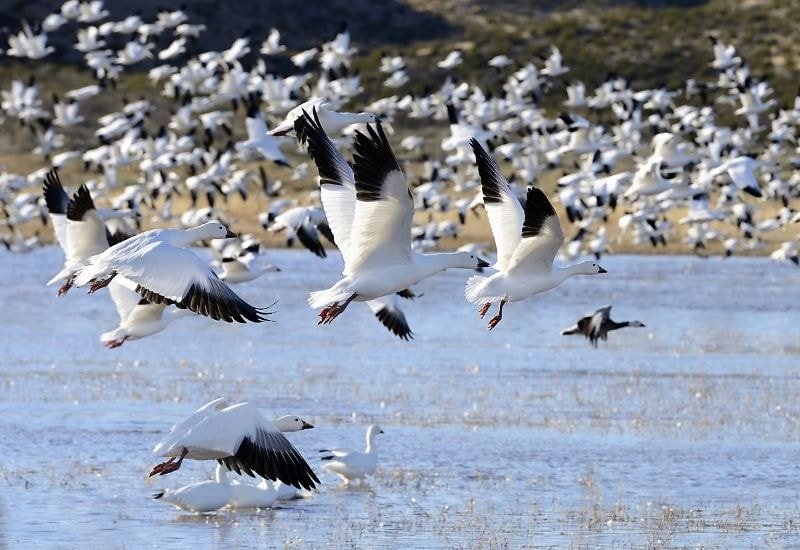How many times have you considered a wildlife hazard 4,000 km (2500 miles) or more from your aerodrome? What if that hazard was not only a long distance away, but also some time in the future? That’s the scenario which faced North American airports along the Western Central Flyway.
Snow goose breeding surveys (conducted in the northern hemisphere’s spring) indicate that the lesser snow goose population on Wrangel Island has grown from 352,000 in 2017 to 685,000 in 2020. And when they are referred to as ‘lesser snow geese’, that’s only in relation to their bigger cousins, the greater snow goose. The lesser snow geese are still large birds: ranging from 64 to 79 cm (25 to 31 in) tall and weighing 2.05 to 2.7 kg (4.5 to 6.0 lb). They migrate predominantly to British Columbia and Washington, resulting in hundreds of thousands of large, flocking birds moving through critical airspace. Many of these birds too, are naïve juveniles, unfamiliar with airport environments.
The presence of a large number of lesser snow geese along the west coast demonstrates how important it is to have as diverse a representation of stakeholders as possible on your airport wildlife committee. Reach out widely to your airport stakeholders: from landowners in proximity to your aerodrome, to universities, conservation groups, government agencies, airlines, air traffic control and others, to create an effective forum for discussing wildlife hazards. By casting your net wide, you can gather information on potential risks in time to develop effective strategies before incidents occur, rather than reacting after the event. Looking beyond the traditional boundaries for off-airport concerns (13km) gives airports the opportunity to plan for strike risk months ahead of time.


